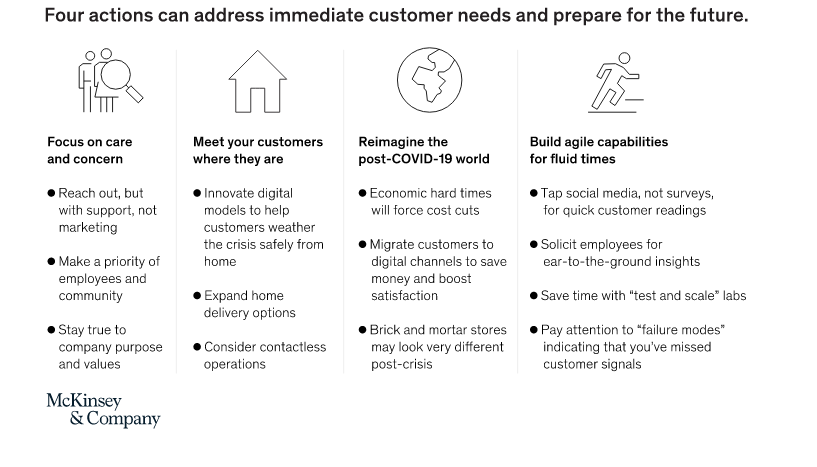Brand Social Responsibility: How to Respond During Coronavirus Outbreak

In times of crisis, we feel the urge to help others. The COVID-19 pandemic is no different. Here are seven ways your company can help its stakeholders help others.
The coronavirus has now spread to nearly every country in the world and claimed thousands of lives. Companies were among the first to step up, pledging more than 80% of early funds to coronavirus response efforts.
The U.S. Chamber of Commerce Foundation has collected information about more than 200 companies providing aid to date. In addition to providing aid, companies are also dealing with the consequences of the outbreak on day-to-day operations, as conferences are cancelled, financial markets respond, and policies are implemented.
New research published by McKinsey on 16 March outlines current perspectives on the outbreak, and what steps businesses of all shapes and sizes can take to shield themselves from long-term economic damage.
Different ways businesses can respond to the coronavirus
- Protect your employees
- Set up a cross-functional response team
- Test for stress, ensure liquidity and build a contingency plan
- Stabilize the supply chain
- Stay “close” to customers
- Engage in table-top “practice planning”
Corporate Social Responsibility (CSR) is now a familiar metric of how well a brand interacts with stakeholders and communities, both locally and globally. Supporting the common social good has become just as important a goal as delivering shareholder value and profitability for organizations for all sizes, even up to enterprise level, across every business vertical imaginable.
Customer Engagement During Coronavirus
Particularly in times of crisis, a customer’s interaction with a company can trigger an immediate and lingering effect on his or her sense of trust and loyalty. As millions are furloughed and retreat into isolation, a primary barometer of their customer experience will be how the businesses they frequent and depend upon deliver experiences and service that meets their new needs with empathy, care and concern. Now is also the time for customer experience (CX) leaders to position themselves at the forefront of the longer-term shifts in consumer behavior that result from this crisis. Keeping a real-time pulse on changing customer preferences and rapidly innovating to redesign journeys that matter to a very different context will be key.
